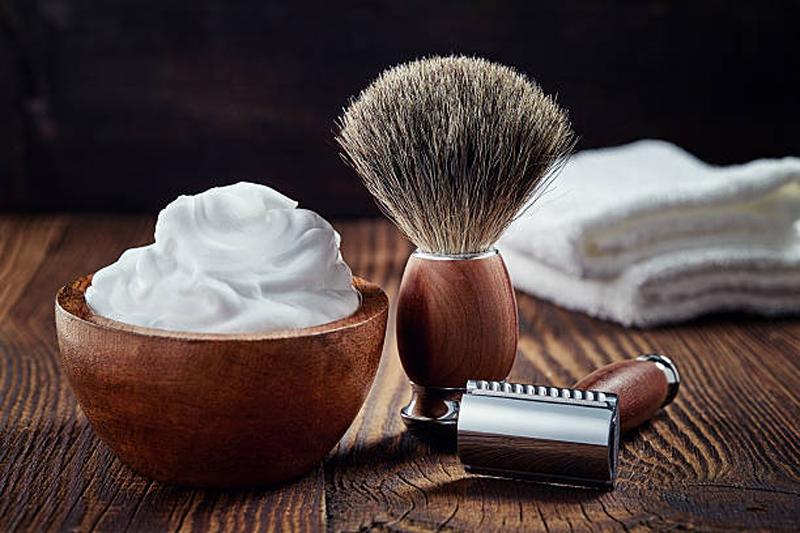
For most people, they at least occasionally shave a part of their body to remove any unwanted hair in areas that they’d prefer to be smooth. And while intermittent shaving won’t cause much damage to your skin, if you choose to shave more often, like daily, you’ll need to take some additional precautions to protect your skin from things like irritation, razor burn, and nicks or cuts.
To help you in doing this and ensuring that your skin is still soft, supple, and clear despite the frequency in which you’re shaving, here are five tips for protecting your skin from frequent shaving.
Properly Prepare Your Skin
According to Shave.net, protecting your skin from frequent shaving starts with how you treat your skin both before and after shaving.
To do this, Zoe Malin, a contributor to NBC News, shares that you need to spend the time and effort required to properly prepare your skin for imminent shaving. This can be done by spending about 10 minutes in warm water before you plan to shave your skin. Warm water will help your skin and the hair to soften so it’s easier to shave. Additionally, gently exfoliating your skin prior to shaving can help to keep your razor clean from excess debris that could cause you to get nicks or cuts as you shave. Just be sure that you don’t scrub your skin too hard so that you don’t irritate it before you start shaving, which can be irritating to skin in and of itself not to mention increasing your chances of things like ingrown hairs.
As for after you’ve shaved, it’s wise to try to close the pores of your skin by splashing on cold water. And to ensure that your skin is given the added moisture it needs, apply some kind of cream, lotion, or moisturizer to finish off your shaving experience.
Use The Right Skin Care Products
Using the right products on your skin can also help you to protect the areas you’ve shaved both before and after you’ve taken a razor to them.
According to RealMenRealStyle.com, the best thing to use on your skin before you start shaving is shave oil. This helps to lubricate your skin and ensure that the blades of your razor slide right over the skin as they cut down the hair. It can also help you to avoid getting razor burn from using your razor. Along with this, you should also use a high quality shaving cream for when you’re actively shaving your skin so that you’re nourishing and moisturizing the skin as you shave over it.
Shave In The Right Direction
Logically, it may make sense to you to shave in the opposite direction that the hair grows. That way, you’ll be getting the hair as short as possible and potentially allowing for more time between future shaves. However, shaving in this direction could cause a lot of damage to your skin, resulting in razor burn and bumps or other irritation.
Rather than shaving this way, the American Academy of Dermatology Association advises that you shave in the same direction that the hair is growing. This will result in less pulling and tugging on the hair, which will create less friction and discomfort. Additionally, when you’re shaving in this direction, you’ll also want to be careful that you’re not pushing too hard with your razor. Just shave lightly with minimal strokes over the area as the best way to reduce irritation and protect your skin.
Shave With Fewer Blades
While you might think that using more blades on your razor will help you get a closer shave, dragging more razor blades across your skin can actually cause a lot more irritation than there would have been had you only used one or two razors when shaving. Knowing this, Phillip Picardi, a contributor to GQ.com, recommends that you try to use only a single or double blade if you’ve had issues with razor burn or skin irritation in the past. The fewer blades you have coming in contact with your skin, the fewer chances there are for you to irritate your skin or inflict an accidental injury on yourself.
Don’t Rush It
Even if you take all the precautions mentioned above and get everything ready to have a clean, safe, and successful shave, it all can be for nothing if you aren’t able to take your time with the actual shave.
According to Dr. Elana Pearl Ben-Joseph, a contributor to KidsHealth.org, it’s usually when people are rushing through the process of shaving their body hair that accidents or injuries occur that cause harm to the skin. So instead of quickly dragging a razor over your skin, consider if you have the time to devote to an effective and safe shave. And if you don’t, you may need to weigh whether or not you can afford to skip shaving that day and just shave the next day.
This postponing of shaving can also be a way to help protect your skin. Since shaving when the hair isn’t quite long enough can also cause a lot of unnecessary irritation, adding an extra day or two in between the normal amount of time that you go between shaves could give your skin the break it needs to heal before you put it through shaving again. While this might mean having to get comfortable with a little more stubble than you’re used to, your skin could react very well to this change in your routine.
If you shave frequently and have experienced skin issues like razor burn, ingrown hairs, dry skin, or other forms of irritation, consider using the tips mentioned above to help you learn how you can protect your skin from the potential damage and injuries of shaving. As you implement some of the advice mentioned above, you should see a drastic and visual improvement in the way your skin looks and feels both before and after you shave.
Comments
comments